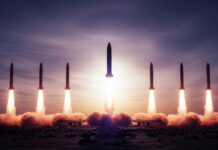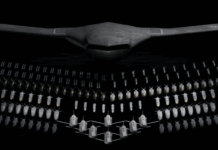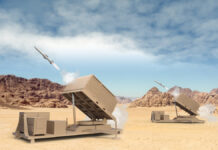
Quantum technology holds promise as a highly precise alternative to GPS for navigation and to sonar for detecting submarines, according to BreakingDefense. Its extreme sensitivity enables ultra-accurate measurements, such as tracking time to a trillionth of a second using atomic clocks. However, that same sensitivity also makes quantum sensors highly vulnerable to interference in real-world, high-vibration environments, such as aircraft or war zones. A new DARPA Robust Quantum Sensors (RoQS) program aims to overcome this challenge by adapting quantum sensors for use in helicopters, jets, and satellites. During the program’s 30-month initial phase, participants will test their tech on a helicopter. If successful, they’ll then have 12 months to collaborate with Pentagon programs to integrate and tailor the sensors for specific military systems. Darpa writes:
The Defense Advanced Research Projects Agency (DARPA) has officially launched Phase 1 of its Robust Quantum Sensors (RoQS) program, a groundbreaking effort to make quantum sensing viable beyond the lab – on the ground, at sea, in the air, and even in space.
Quantum sensors offer unmatched precision in detecting magnetic and electric fields, acceleration, rotation, and gravity, but their extraordinary sensitivity has made them notoriously fragile in real-world environments. Even minor vibrations or electromagnetic interference can degrade performance, limiting their operational use. RoQS is taking a fundamentally new approach to this challenge: not by applying temporary fixes like shielding or isolation, but by rethinking sensor design from the ground up.
RoQS aims to create inherently robust sensors that reject interference, withstand motion, and deliver reliable, state-of-the-art performance across domains. The goal is to break through long-standing barriers to field deployment, accelerate the transition from lab to mission, and unlock new capabilities in navigation, threat detection, and situational awareness.
The first phase of the program is in progress, with two technical areas kicking off in parallel:
-
Sensor Development: Performer teams will build compact, “walk-on/walk-off” quantum sensors and test them on a government-provided helicopter. The helicopter environment was chosen for its inherent challenges – strong electromagnetic fields, vibrations, and gradients – so that sensors that pass this test can be trusted to work on a wide range of other Department of Defense (DOD) platforms.
-
Platform Integration Studies: Performers will work with the defense industrial base to identify specific Programs of Record (PoRs) and platform types where quantum sensors could deliver strategic value. These could range from ground vehicles and submarines to satellites and UAVs. The studies will help shape integration paths and technical requirements for RoQS’ second phase.
DOD engagement and integration start now
While RoQS is focused today on prototyping and platform studies, its real impact will be realized in the program’s second phase, during which quantum sensors will be integrated onto actual DOD platforms to meet mission-critical requirements. DARPA is asking government platform owners and mission stakeholders across the services to begin engaging with the RoQS team now.
In parallel with DARPA’s efforts, the US military is also advancing quantum navigation in space. On August 21, 2025, the X-37B space plane tested a quantum inertial sensor in orbit for the first time, reports Live Science. Using ultra-cold atoms and quantum physics, this technology enables highly accurate, GPS-free navigation—critical for operations in space, underwater, or in conflict zones where GPS signals may be blocked or spoofed. They write:
In space, especially beyond Earth’s orbit, GPS signals become unreliable or simply vanish. The same applies underwater, where submarines cannot access GPS at all. And even on Earth, GPS signals can be jammed (blocked), spoofed (making a GPS receiver think it is in a different location) or disabled — for instance, during a conflict. […]
The upcoming X‑37B mission will be the first time this level of quantum inertial navigation is tested in space. Previous missions, such as NASA’s Cold Atom Laboratory and German Space Agency’s MAIUS-1, have flown atom interferometers in orbit or suborbital flights and successfully demonstrated the physics behind atom interferometry in space, though not specifically for navigation purposes. […]
This summer, the X‑37B mission will bring these advances into space. Because of its military nature, the test could remain quiet and unpublicized. But if it succeeds, it could be remembered as the moment space navigation took a quantum leap forward.
Read more here.



